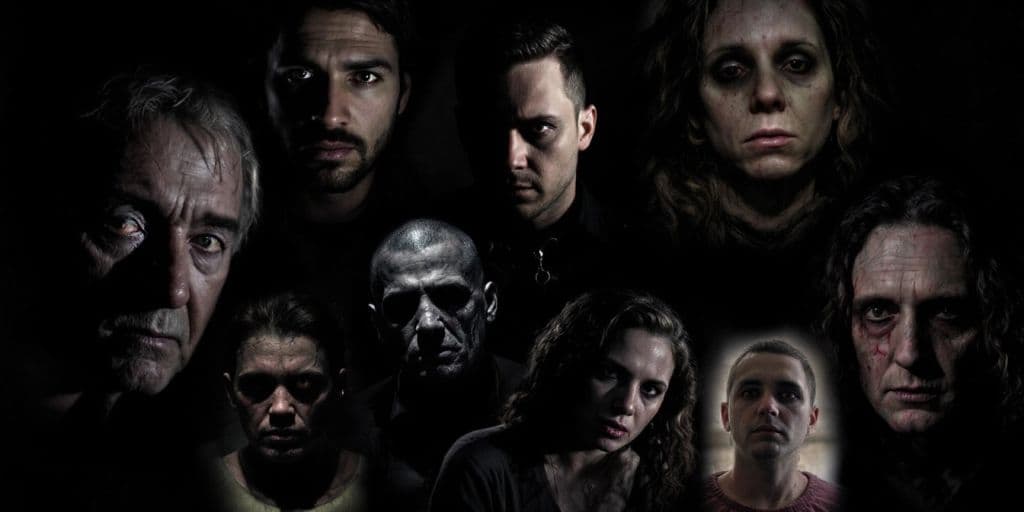True crime stories have a way of gripping our attention, especially those involving famous victims. These cases not only highlight the tragedies faced by the individuals but also reflect on society’s response to crime and justice. The stories of these victims continue to resonate, reminding us of the darker aspects of human nature and the importance of vigilance in our communities.
Key Takeaways
- The JonBenét Ramsey case remains unsolved, sparking ongoing debates about media influence on investigations.
- The Black Dahlia murder is one of America’s oldest unsolved cases, leaving behind a legacy of theories and speculation.
- Kitty Genovese’s murder led to studies on the bystander effect, highlighting how people often fail to act in emergencies.
- The Zodiac Killer case is notorious for its cryptic letters and the killer’s ability to evade capture, fueling public fascination.
- Elisa Lam’s mysterious death sparked numerous theories, showcasing how social media can amplify interest in unsolved cases.
The Tragic Tale of JonBenét Ramsey
The Night of the Murder
On December 26, 1996, the killing of JonBenét Ramsey shocked the nation. Early that morning, Patsy Ramsey found a ransom note demanding $118,000 for her daughter, JonBenét, who was just six years old. After calling 911, the family waited anxiously for news. Tragically, later that day, JonBenét’s body was discovered in the basement of their Boulder, Colorado home. She had suffered severe injuries, including a skull fracture and ligature marks around her neck.
The Investigation and Suspects
The investigation into JonBenét’s death was complicated by several factors:
- Conflicting stories from family members
- The ransom note was written on paper from the Ramsey home
- Mistakes made by police at the crime scene
Despite extensive questioning, no one was charged. The Ramsey family was cleared through DNA testing, but suspicions lingered. Many theories emerged, but the case remains unsolved.
The Media Frenzy
The media coverage surrounding JonBenét’s murder was intense. News outlets swarmed the family’s home, and the story became a national obsession. JonBenét was often portrayed as a child beauty queen, which led to debates about the impact of child pageants. The case has continued to captivate the public, with new theories and discussions emerging even decades later.
The story of JonBenét Ramsey is a haunting reminder of how a single tragedy can resonate through time, leaving unanswered questions and a legacy of sorrow.
The Unsolved Mystery of the Black Dahlia
The Gruesome Discovery
On January 15, 1947, the body of Elizabeth Short, known as the "Black Dahlia," was found in a vacant lot in Los Angeles. Her body was horribly mutilated, cut in half and drained of blood. The shocking nature of the crime left the community in disbelief.
The Investigation and Theories
The investigation into Short’s murder was extensive, involving numerous detectives and countless leads. Despite this, the case remains unsolved. Some theories suggest:
- A serial killer was involved.
- Hollywood connections may have played a role.
- Personal vendettas could have led to her death.
The Lasting Impact on Pop Culture
The Black Dahlia case has had a profound impact on popular culture, inspiring numerous books, movies, and documentaries. It remains a symbol of the dark side of fame and the mysteries surrounding unsolved crimes.
The Black Dahlia case continues to haunt the public imagination, reminding us of the unsolved crimes that still baffle investigators today.
The Chilling Case of Kitty Genovese
The Night of the Attack
On March 13, 1964, Kitty Genovese was returning home to her apartment in Kew Gardens, Queens, around 2:30 a.m. After a long shift at the bar, she parked her car and began walking the short distance to her home. Unbeknownst to her, a man named Winston Moseley was following her. As she approached her building, he attacked her, stabbing her multiple times. Kitty screamed for help, her cries echoing through the night.
The Bystander Effect
Despite her desperate pleas, none of her neighbors came to her aid. Some heard her cries, but they assumed someone else would help. This phenomenon, later termed the "bystander effect," raised questions about human behavior in emergencies. A few witnesses reported that they thought someone else would call the police, leading to a tragic delay in help.
The Legacy of Kitty Genovese
Kitty’s murder sparked a national conversation about the responsibilities of bystanders. It highlighted the need for community awareness and action in emergencies. The case remains a chilling reminder of how indifference can cost lives. Kitty Genovese’s story continues to be studied in psychology and sociology, serving as a powerful lesson on the importance of taking action when witnessing a crime or emergency.
The tragic events surrounding Kitty Genovese’s murder remind us that inaction can have dire consequences. It challenges us to reflect on our own responses in times of crisis.
The Zodiac Killer’s Reign of Terror

The Murders and Letters
The Zodiac Killer is one of the most infamous serial killers in history. He operated in Northern California during the late 1960s and early 1970s, claiming to have killed at least 37 people, although only seven murders have been confirmed. His first known victims were Betty Lou Jensen and David Faraday, who were shot in December 1968. The killer’s cryptic letters to the media began shortly after, where he taunted police and claimed responsibility for the murders.
The Investigation and Suspects
The investigation into the Zodiac Killer was extensive but frustrating. Despite numerous leads and suspects, the police were unable to catch him. The killer sent letters that included ciphers, some of which remain unsolved. A notable letter stated, "I like killing people because it is so much fun." This chilling statement highlighted his disturbing mindset.
| Year | Victims | Location |
|---|---|---|
| 1968 | 2 | Vallejo |
| 1969 | 2 | Lake Berryessa |
| 1969 | 1 | San Francisco |
Theories and Unanswered Questions
Many theories surround the Zodiac Killer’s identity. Some believe he was a local man, while others think he may have moved away after the murders. The case remains open, and the killer’s identity is still a mystery. True crime enthusiasts continue to study his letters and the evidence left behind, hoping to uncover the truth behind this chilling case.
The Zodiac Killer’s story is a haunting reminder of how some mysteries remain unsolved, leaving a lasting impact on society and the world of true crime.
The Mysterious Death of Elisa Lam
The Disappearance
Elisa Lam was a 21-year-old student from Vancouver, Canada, who went missing in January 2013 while traveling in Los Angeles. She was last seen at the Cecil Hotel, a place known for its dark history. Her disappearance sparked a massive search that captivated the public and media alike.
The Discovery and Investigation
Weeks later, her body was found in a water tank on the hotel roof. The circumstances surrounding her death were strange and unsettling. Investigators released a video showing her acting erratically in an elevator, which raised many questions. Here are some key points from the investigation:
- Unexplained behavior: The video showed Elisa pressing buttons and hiding in the corner of the elevator.
- No signs of struggle: The autopsy revealed no signs of trauma or foul play.
- Mental health: Elisa had a history of mental health issues, which some believe may have contributed to her tragic end.
Theories and Speculations
Theories about her death range from accidental drowning to more sinister explanations. Some popular speculations include:
- Accidental drowning: Many believe she may have accidentally fallen into the tank.
- Paranormal involvement: Some suggest that the hotel’s haunted reputation played a role in her death.
- Foul play: Others think someone may have been involved, despite the lack of evidence.
The mystery of Elisa Lam’s death continues to haunt many, leaving unanswered questions about what truly happened during her final days.
This case remains one of the most gripping true crime stories of the decade, highlighting the complexities of mental health and the impact of media on public perception.
The Infamous Case of Jack the Ripper
The Victims
The Jack the Ripper case is notorious for its brutal murders of several women in London during 1888. The victims, often referred to as the "canonical five," include:
- Mary Ann Nichols
- Annie Chapman
- Elizabeth Stride
- Catherine Eddowes
- Mary Jane Kelly
Each of these women faced horrific fates, with their bodies discovered in gruesome conditions, leading to widespread fear in the community.
The Investigation
The investigation into the Ripper’s crimes was extensive but ultimately fruitless. Authorities received numerous tips, including letters from someone claiming to be the killer. Despite interviewing many suspects, the police were unable to identify the murderer. The case remains unsolved, with various theories about the identity of Jack the Ripper still debated today.
Theories and Suspects
Many theories have emerged regarding the identity of Jack the Ripper. Some of the most discussed suspects include:
- Montague John Druitt – A barrister who drowned shortly after the murders ceased.
- Aaron Kosminski – A Polish immigrant who was a known resident of Whitechapel.
- Walter Sickert – A painter whose works have been linked to the Ripper case.
The mystery surrounding Jack the Ripper continues to captivate the public, with many books, films, and documentaries exploring the case.
The Jack the Ripper case serves as a chilling reminder of the dark side of human nature and the unsolved mysteries that still haunt society today.
The Haunting Story of the Lindbergh Baby

The Kidnapping
On March 1, 1932, the world was shaken when 20-month-old Charles Augustus Lindbergh Jr. was kidnapped from his home in New Jersey. His father, famous aviator Charles Lindbergh, heard a noise that night and found a ransom note demanding $50,000. Despite the family’s wealth and resources, the search for the baby was fruitless. The family was desperate, and they even paid the ransom, but the kidnapper never returned the child.
The Investigation and Trial
After two months of searching, the tragic discovery was made. The body of the little boy was found just over a mile from his home. The investigation led to Bruno Richard Hauptmann, a German immigrant, who was arrested after using part of the ransom money. His trial became known as the "Trial of the Century," drawing massive media attention. Hauptmann was convicted and executed on April 3, 1936, despite maintaining his innocence throughout.
The Aftermath and Legacy
The Lindbergh case had a lasting impact on American law. It prompted Congress to pass the Federal Kidnapping Act in 1932, making it illegal to transport a kidnap victim across state lines. This law is often referred to as the Lindbergh Law. The case remains a haunting reminder of the dangers of kidnapping and the lengths to which families will go to protect their loved ones.
The Lindbergh baby kidnapping is a tragic story that still resonates today, reminding us of the fragility of life and the impact of crime on families and society.
The story of the Lindbergh baby is one that still sends chills down our spines. This tragic event captivated the nation and raised many questions about safety and justice. If you want to dive deeper into this haunting tale and explore more intriguing stories, visit our website for exclusive content and resources. Don’t miss out!
Final Thoughts
The stories of true crime victims remind us of the dark side of humanity. Each case, from the tragic to the shocking, leaves a mark on our hearts and minds. These victims were real people with dreams and lives cut short by violence. Their stories continue to resonate, urging us to remember them and reflect on the importance of justice and compassion. As we explore these tales, we are reminded of our shared humanity and the need to stand against such horrors.
Frequently Asked Questions
Who was JonBenét Ramsey?
JonBenét Ramsey was a young girl who was tragically murdered in her home in Boulder, Colorado, in 1996. Her case received massive media attention.
What happened to the Black Dahlia?
The Black Dahlia was the nickname given to Elizabeth Short, a woman who was murdered in Los Angeles in 1947. Her case remains unsolved and is one of the most famous murder cases in history.
What is the Bystander Effect?
The Bystander Effect is a social phenomenon where individuals are less likely to help a victim when others are present. This was highlighted in the case of Kitty Genovese.
Who is the Zodiac Killer?
The Zodiac Killer is an unidentified person who committed several murders in Northern California during the late 1960s and early 1970s. The case remains open and unsolved.
What happened to Elisa Lam?
Elisa Lam was a young woman who disappeared in 2013 while staying at a hotel in Los Angeles. Her body was later found in a water tank, leading to many theories about her death.
Who was Jack the Ripper?
Jack the Ripper is the name given to an unidentified serial killer who operated in London in 1888. The killer is known for the brutal murders of several women.




